
SUMMER ROLL CALL
06/26/20 — Ada Broussard
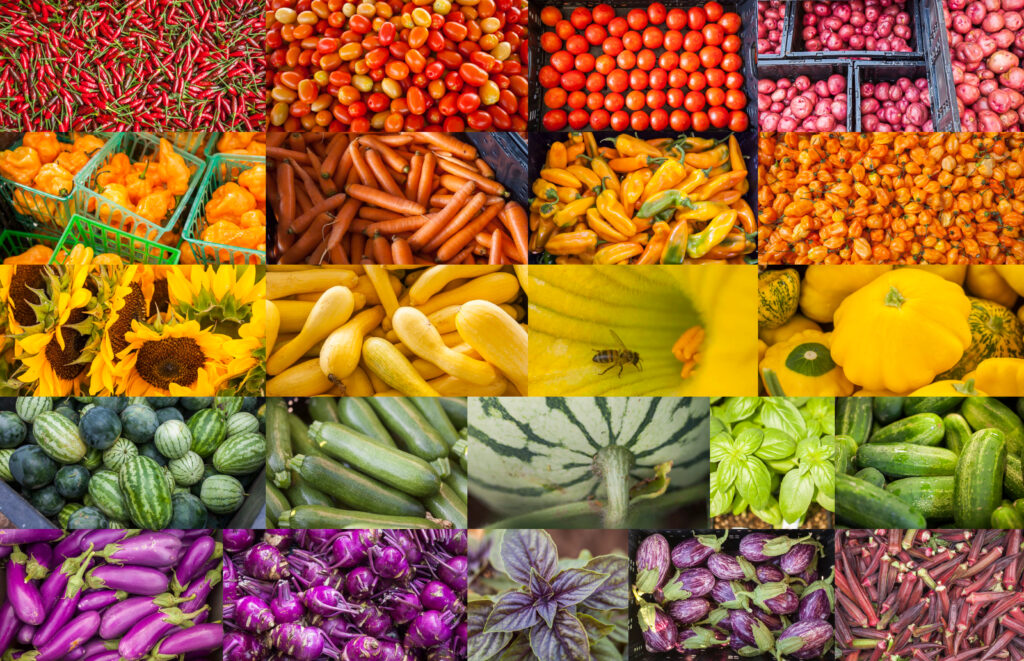 As a farmer, it seems almost absurd to talk about peppers and tomatoes in late January. When you put the tiny seeds in soil, you’re really just going through the motions of what you know to be true. But really, you aren’t quite visualizing rows of tomatoes or imaging spicy jalapenos… you’re more invested in the crops currently ready in the fields and summer feels like a faraway dream.
As a farmer, it seems almost absurd to talk about peppers and tomatoes in late January. When you put the tiny seeds in soil, you’re really just going through the motions of what you know to be true. But really, you aren’t quite visualizing rows of tomatoes or imaging spicy jalapenos… you’re more invested in the crops currently ready in the fields and summer feels like a faraway dream.
Fast forward to June 26, a few days past the summer solstice and just after the first official day of summer, and quite suddenly every pepper plant in the field is laden with ripe fruit. The summer sunshine and the radiating heat is doing its job. Perhaps it’s a similar experience for CSA members: you become so familiar with crops like beets and radishes, and just when you think you’ve reached your limit, boxes are packed with heat-loving peppers and a rainbow of tomatoes. Though the seeds were sown long ago, the shift happens abruptly!
This week conducting a roll call of some summer hallmarks - those veggies that give a resounding “HERE!”, declaring their place among the treasures of summer. We hope you really savor the flavor of the season, the taste of summer fruit. They are not the same flavors as vegetables who prefer a cold afternoon, and instead, summer vegetables hail from tropical and equatorial regions. They are not just heat-tolerant, but they are heat-loving, growing into their best selves while the rest of us try not to melt. Consume these flavors, and maybe you’ll adopt some heat-loving attitudes as well. Choose to cook dishes that call you to summer and root you around a table or checkered blanket.
Peppers:
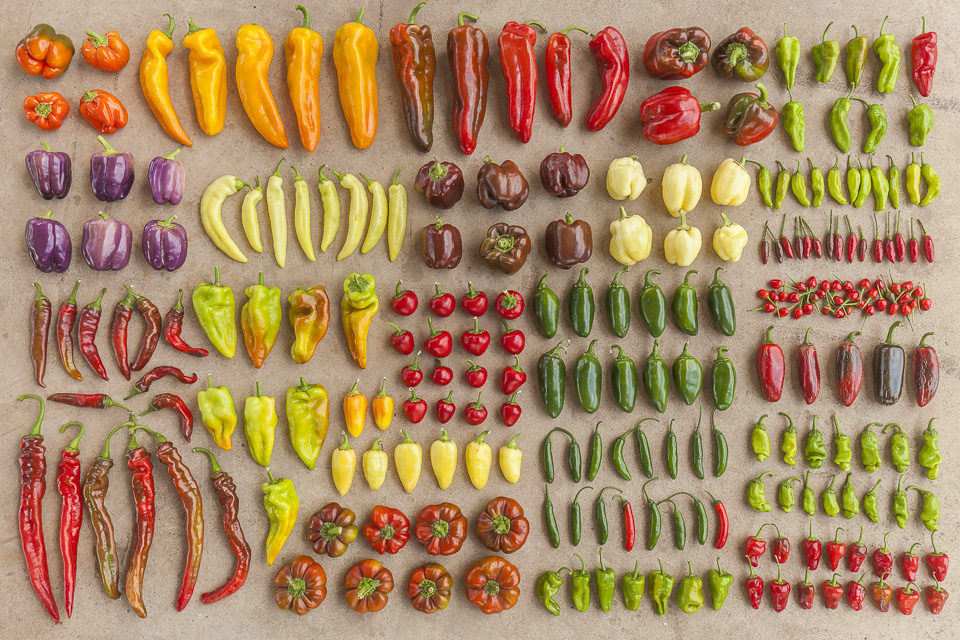 Most of you pepper plants don’t get very big. You waste no time growing tall and instead turn your attention to the production of tiny (usually white) flowers. And once these flowers mature, your crunchy walls begin to emerge, eventually forming your own unique shape and your own specific palate. Some of you are strictly hot or strictly sweet, and some of you waiver in-between. You can be tiny (pequin’!) or large. You can be squatty and round like a pimento, or long and lean like a banana. And once you start, there’s really no stopping you. If picked continuously, you will continue to flower and fruit as long as the days are hot, which is an eternity. Peppers, you are a cornerstone of most summer crop plans, but despite your omnipresence, we won’t take you for granted. The sweet and the green bells among you provide the background flavor for so many soulful dishes - whether you’re hiding in a Cajun or Creole “holy trinity”, in a Spanish soffrito, or roasted and blitz for some Mexican flair, you provide a foundation of deliciousness. But, you can also stand alone. We’ll pick you, a poblano if we want a kick or a red Carmen for something sweet, scoop out your pithy insides (you didn’t need those, did you?) and stuff you with leftovers, mixed, or not, with a cooked grain. We’ll surround you in inches of liquid or tangy tomatoes, and bake you until your walls steam soft. You are the ultimate vessel, and you put the taco salad-shell to shame. We grow more varieties of you, glorious peppers, than we do any other vegetable at the farm. You are as diverse as the bugs on the ground and the citizens of the world, and we love you all!
Most of you pepper plants don’t get very big. You waste no time growing tall and instead turn your attention to the production of tiny (usually white) flowers. And once these flowers mature, your crunchy walls begin to emerge, eventually forming your own unique shape and your own specific palate. Some of you are strictly hot or strictly sweet, and some of you waiver in-between. You can be tiny (pequin’!) or large. You can be squatty and round like a pimento, or long and lean like a banana. And once you start, there’s really no stopping you. If picked continuously, you will continue to flower and fruit as long as the days are hot, which is an eternity. Peppers, you are a cornerstone of most summer crop plans, but despite your omnipresence, we won’t take you for granted. The sweet and the green bells among you provide the background flavor for so many soulful dishes - whether you’re hiding in a Cajun or Creole “holy trinity”, in a Spanish soffrito, or roasted and blitz for some Mexican flair, you provide a foundation of deliciousness. But, you can also stand alone. We’ll pick you, a poblano if we want a kick or a red Carmen for something sweet, scoop out your pithy insides (you didn’t need those, did you?) and stuff you with leftovers, mixed, or not, with a cooked grain. We’ll surround you in inches of liquid or tangy tomatoes, and bake you until your walls steam soft. You are the ultimate vessel, and you put the taco salad-shell to shame. We grow more varieties of you, glorious peppers, than we do any other vegetable at the farm. You are as diverse as the bugs on the ground and the citizens of the world, and we love you all!
Eggplant:
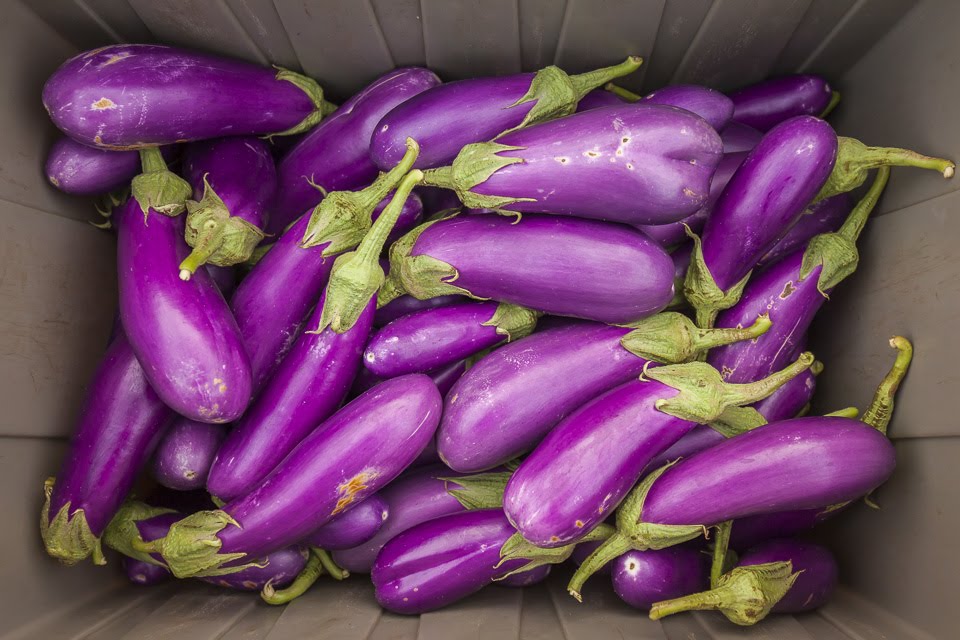 Eggplant, oh eggplant, I’m sorry you’re so misunderstood. Though you often act like a sponge, I hope you don’t soak up the negative talk around you, and instead plump your flesh with rich tomato sauces and sweet and spicy glazes. Or maybe, you’ll be coated with breadcrumbs and fried till crisp. You make a wonderful addition, or even substitution, to meat - stretching your silky texture and weaving your way into every bite. When touched by fire, the smokiness you take on is truly intoxicating, creating the perfect base for a dip like babaganoush, caponata, or even baingan bharta.
Eggplant, oh eggplant, I’m sorry you’re so misunderstood. Though you often act like a sponge, I hope you don’t soak up the negative talk around you, and instead plump your flesh with rich tomato sauces and sweet and spicy glazes. Or maybe, you’ll be coated with breadcrumbs and fried till crisp. You make a wonderful addition, or even substitution, to meat - stretching your silky texture and weaving your way into every bite. When touched by fire, the smokiness you take on is truly intoxicating, creating the perfect base for a dip like babaganoush, caponata, or even baingan bharta.
Squash:
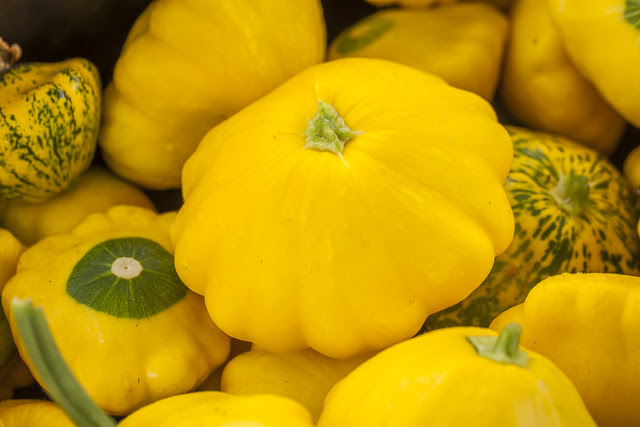 Steadfast squash. One of the three sisters and as kind as they come. When other crops are proving difficult, we know we can count on you. There are squash bugs and vine borers that attempt to ruin your crop, but with ease and grace your defeat those pests, cranking out patty pan, zucchini, yellow, and butternut babies. We love the bright yellow flower that emerges from your tubular stems, and we are constantly amazed when a 2-inch squash nub grows into an 8-inch baton in what feels like an afternoon. If we sat with you long enough, we think we could see the fruit growing. But of course, you don't require us to sit with you, and instead do your thing with little thought. Really, you are the star of summer, the cucurbit queen, a versatile vegetable who can sneak its way into so many recipes. We promise to compost our preconceived notions of how boring you are, perhaps even turning to this list for alternative ways to invite you to our table.
Steadfast squash. One of the three sisters and as kind as they come. When other crops are proving difficult, we know we can count on you. There are squash bugs and vine borers that attempt to ruin your crop, but with ease and grace your defeat those pests, cranking out patty pan, zucchini, yellow, and butternut babies. We love the bright yellow flower that emerges from your tubular stems, and we are constantly amazed when a 2-inch squash nub grows into an 8-inch baton in what feels like an afternoon. If we sat with you long enough, we think we could see the fruit growing. But of course, you don't require us to sit with you, and instead do your thing with little thought. Really, you are the star of summer, the cucurbit queen, a versatile vegetable who can sneak its way into so many recipes. We promise to compost our preconceived notions of how boring you are, perhaps even turning to this list for alternative ways to invite you to our table.
Tomato:
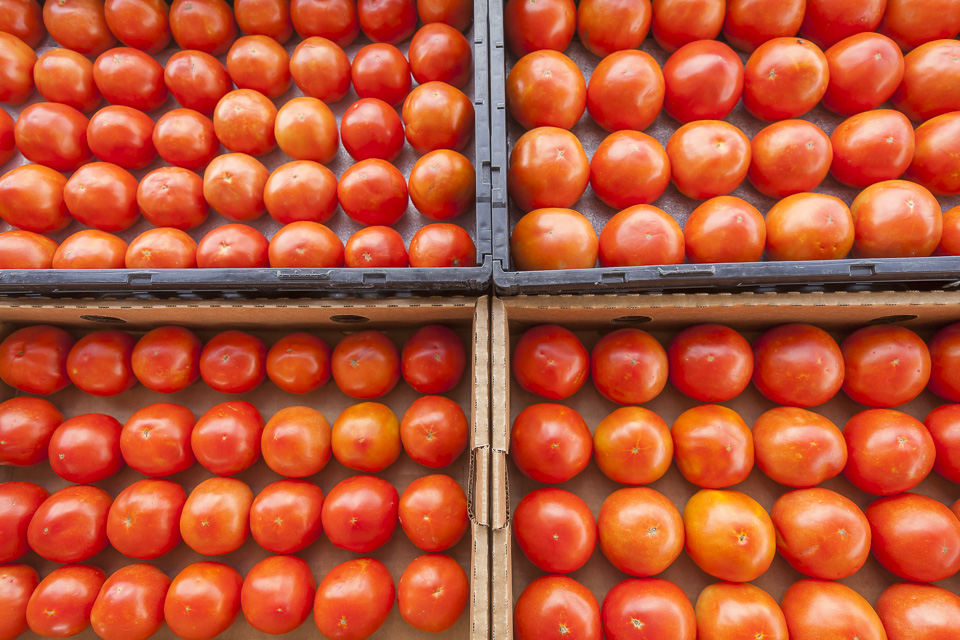 Summertime’s diva, you often occupy the spotlight with your glowing red skin and sweet tangy insides. Even before you’re technically show-ready, you’re still a farmer’s favorite. You get special treatment from the moment your seeds arrive in the mail, beginning your life inside the farm office while others are born in the greenhouse. Once planted, you’re still needy - requiring wooden stakes and rolls of twine to prop you up. But all this fussiness is forgiven when we eat your first fruit, plucked from the vine and plopped into our mouth. You’re so sweet! So fun to harvest, and a joy to admire once piled in bins and methodically organized in grids. Once a tiny and wild vining fruit, you have made your mark on history and spanned the globe. What would spaghetti be without sauce or fries without ketchup? There are no limits to how we can enjoy you, but when we get stumped we’ll just go to this archive.
Summertime’s diva, you often occupy the spotlight with your glowing red skin and sweet tangy insides. Even before you’re technically show-ready, you’re still a farmer’s favorite. You get special treatment from the moment your seeds arrive in the mail, beginning your life inside the farm office while others are born in the greenhouse. Once planted, you’re still needy - requiring wooden stakes and rolls of twine to prop you up. But all this fussiness is forgiven when we eat your first fruit, plucked from the vine and plopped into our mouth. You’re so sweet! So fun to harvest, and a joy to admire once piled in bins and methodically organized in grids. Once a tiny and wild vining fruit, you have made your mark on history and spanned the globe. What would spaghetti be without sauce or fries without ketchup? There are no limits to how we can enjoy you, but when we get stumped we’ll just go to this archive.
Melon:
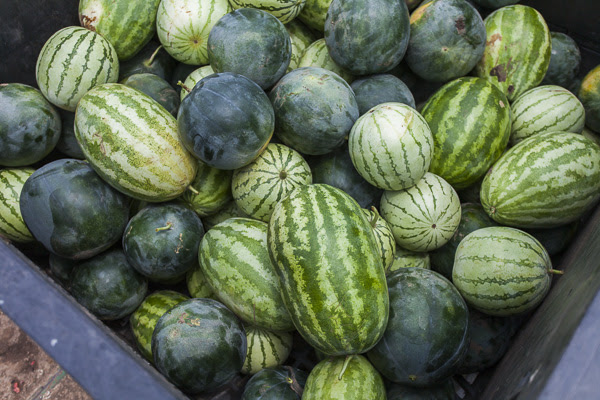 Melon, you’re truly everyone’s favorite friend. You’re the rosy magnetic force at the party, and folks of all ages smile when they see you arrive. They say you hail from the desert, but I can’t imagine how something so sweet and juicy can come somewhere so dry and arid? You’re playful and fun, and an incredibly good sport when people involve you in summertime games and sandy picnics. Farmers’ move and carry thousands and thousands of pounds of you every year, and you’d think that for this reason, they’d shun your arrival. But no! Instead, they toss you around with joy, and celebrate with snack if your bright pink, yellow, or orange flesh accidentally explodes on the packing shed floor. We love you, melon, and we love you summer. Thanks for reading!
Melon, you’re truly everyone’s favorite friend. You’re the rosy magnetic force at the party, and folks of all ages smile when they see you arrive. They say you hail from the desert, but I can’t imagine how something so sweet and juicy can come somewhere so dry and arid? You’re playful and fun, and an incredibly good sport when people involve you in summertime games and sandy picnics. Farmers’ move and carry thousands and thousands of pounds of you every year, and you’d think that for this reason, they’d shun your arrival. But no! Instead, they toss you around with joy, and celebrate with snack if your bright pink, yellow, or orange flesh accidentally explodes on the packing shed floor. We love you, melon, and we love you summer. Thanks for reading!
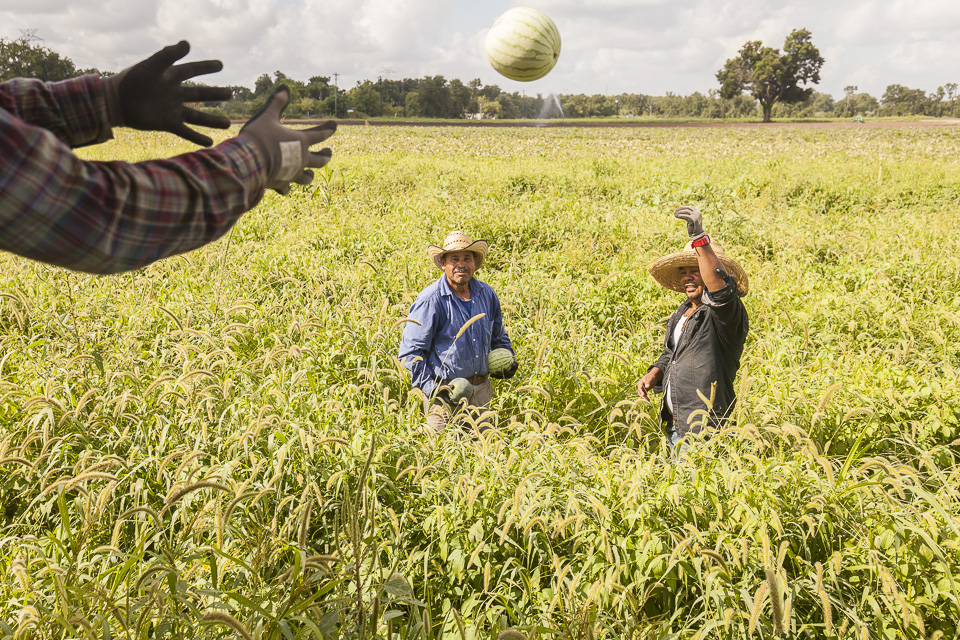
TOMATO SODA, OR TOMATO PEACH SODA
06/24/20 — Ada Broussard
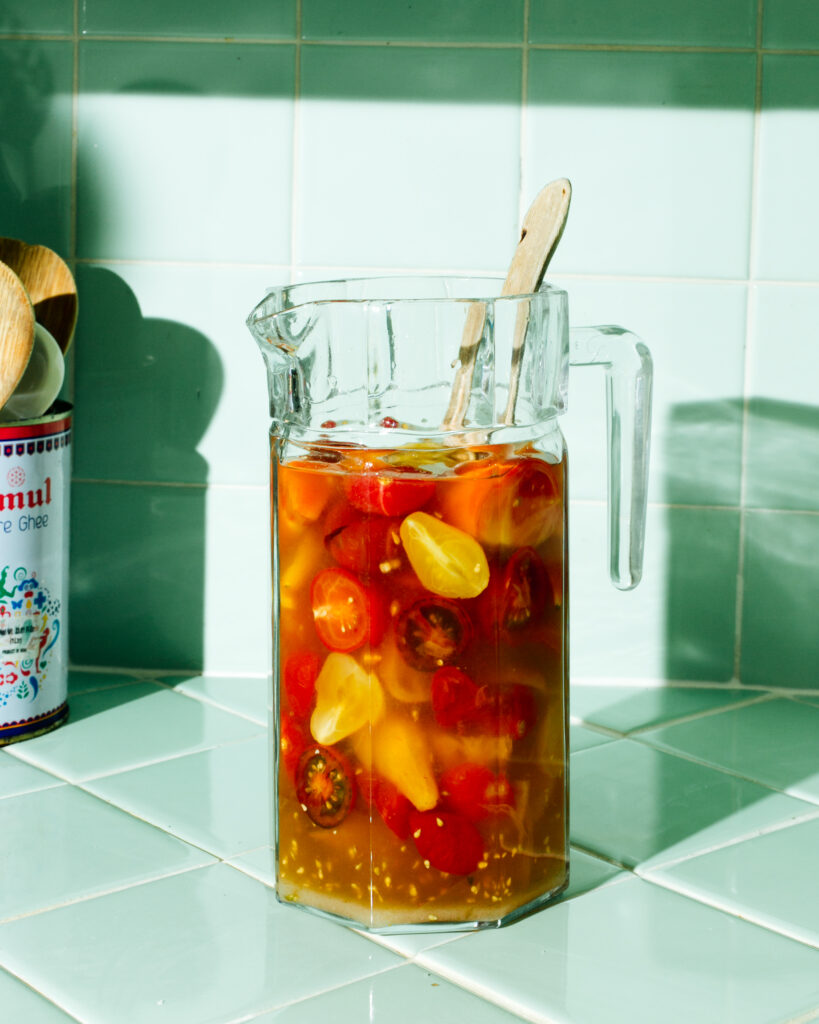
Tomato Soda Recipe and photos by Mackenzie Smith
Ahhh, tomato season. The time of year when, if you have a garden or know someone who does and you also subscribe to a CSA, there is a good chance you will have more tomatoes than you know what to do with.
One of my favorite ways to enjoy the nuanced flavor of tomatoes is to make a shrub by covering them in a 1:1 ratio (give or take) of sugar or honey to vinegar with a pinch of sea salt and letting it sit in the refrigerator overnight.
Vinegar and sugar work harmoniously to and extract and concentrate the flavors of whatever you are preserving, and I consider this to be easier than pickling or canning because you never have to turn on the stove.
I keep shrubs going all summer long as a way to preserve the essence of seasonal fruit — and to celebrate those nuanced flavors in drinks and salad dressings.
After we got halfway through this pitcher of tomato shrub, which was truly perfect on its own, I noticed a couple of slightly overripe peaches on the counter, so I washed them off, and squeezed them into the tomato shrub before topping off with a bit more sugar and vinegar. Now we have tomato peach shrub and it tastes like Summer.
Make tomato peach soda by pouring shrub and sparkling water over ice using a 1:1 ratio and serve with a sprig of fresh mint.

CSA BOX CONTENTS WEEK OF JUN 22ND
06/23/20 — Scott
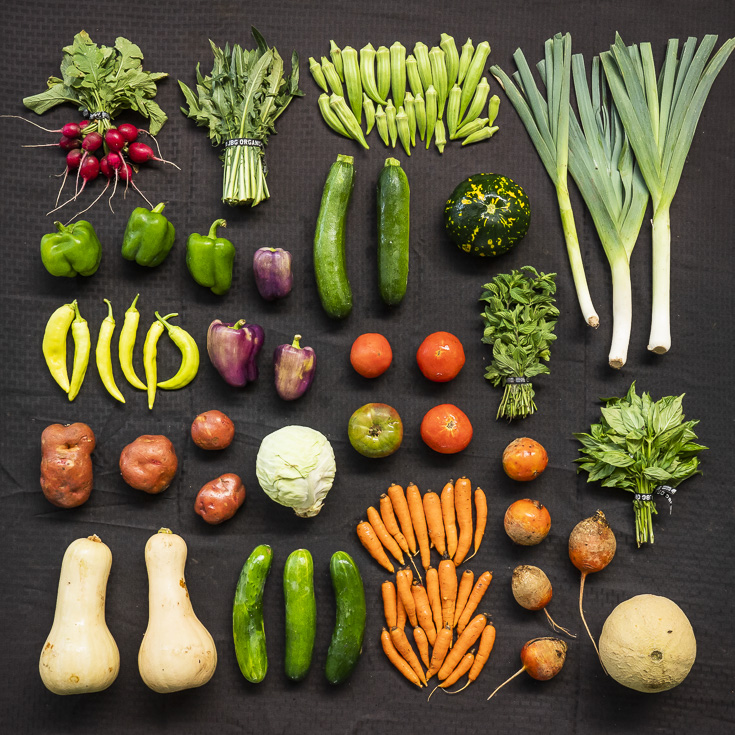 CSA Box Contents Week of June 22nd
CSA Box Contents Week of June 22nd
Large Box
Carrots
Cucumber
Eggplant
Greens, Amaranth
Herb, Farmers Choice
Leek
Melon, Farmers Choice
Okra
Pepper, Shishito
Squash, Farmer's Choice
Tomato
Carrots
Cucumber
Eggplant
Greens, Amaranth
Herb, Farmers Choice
Leek
Melon, Farmers Choice
Okra
Pepper, Shishito
Squash, Farmer's Choice
Tomato
Medium Box
Beets
Eggplant
Farmers Choice
Herb, Farmers Choice
Leek
Melon, Farmers Choice
Okra
Pepper, Shishito
Potato
Tomato
Beets
Eggplant
Farmers Choice
Herb, Farmers Choice
Leek
Melon, Farmers Choice
Okra
Pepper, Shishito
Potato
Tomato
Small Box
Carrots
Cucumber
Herb, Farmers Choice
Radish
Squash, Butternut
Squash, Farmer's Choice
Tomato
Carrots
Cucumber
Herb, Farmers Choice
Radish
Squash, Butternut
Squash, Farmer's Choice
Tomato
Individual Box
Cucumber
Melon, Farmers Choice
Pepper, Sweet
Potato
Tomato
Cucumber
Melon, Farmers Choice
Pepper, Sweet
Potato
Tomato
TOMATOES 2020
06/19/20 — Ada Broussard
We're knee deep in tomatoes, and our Bulk Sale is in full swing. If you haven't gotten the memo, every summer we give the tomato-nuts among you the chance to gorge on vine-ripened, homegrown tomatoes. Ordering our tomatoes in bulk is perfect for an endless supply of BLTs or for any home-preservation projects. You can order 20 lbs. of our JBG Homegrown Slicer tomatoes or 6 or 12 pints of our cherry mix to make your home-ec dreams a home-kitchen reality.
In case you're still unsure of what you could do with tomatoes in such quantities, here are the projects many of your farmers are undertaking: homemade tomato sauce, tomato paste, whole-canned tomatoes, and endless jars of fire roasted salsa (to can or freeze). Bloody Mary mix, and plain ol' tomato juice! Oodles of cherry tomatoes that have been slowly confited in garlicky olive oil, and then stuffed in jars for future pastas, warm salads, taco toppings, or quiche fillings. Tomato jam, as seen on today's newsletter! Tomato sandwiches, tomato tarts, tomato pies, 'n tomatoes stuffed with chorizo and herbs (scroll to the very bottom here for that recipe.). Rustic, quick, tomato galettes, maybe even involving refried beans (trust us). Spaghetti sauce for days. If you've never dabbled in water bath canning and are intimidated by the process, we get it. We it's not that difficult. But! If you really aren't interested in full-on canning, consider the freezer: simply dice up your tomatoes, kill the natural enzymes that live on the fruit's flesh by cooking them down for a quick bit (with or without the addition of things like onions, garlic, and herbs) and then freeze your now-crushed tomatoes in 2 cup portions. You can do the same thing with big portions of sauce or salsa that you simmer down. No need to buy canned tomatoes for the duration of 2020. You preserved what was available at your local farm for dinners to come. If you have your sights on channeling your inner-Italian Nonna and making vats of sauce for seasons to come and gifts to bestow, keep in mind that tomatoes cook down. While 20 or even 60 lbs. of tomatoes may seem like a lot of fruit, you may be surprised.
How it works: Choose the farmers' market you would like to scoop up your tomatoes, as well as the tomato quantity of tomatoes you'd like. Faith will email you in the coming week or so to confirm your order and and schedule a delivery date. These dates are scheduled based on the number of tomatoes that are ready and ripe in our fields, ensuring that you get the freshest crop. Order tomatoes here, scroll tomatoes below. And happy cookin'!
![]()
![]()
![]()
![]()
![]()
![]()
![]()
![]()
![]()
![]()
![]()
![]()
![]()
In case you're still unsure of what you could do with tomatoes in such quantities, here are the projects many of your farmers are undertaking: homemade tomato sauce, tomato paste, whole-canned tomatoes, and endless jars of fire roasted salsa (to can or freeze). Bloody Mary mix, and plain ol' tomato juice! Oodles of cherry tomatoes that have been slowly confited in garlicky olive oil, and then stuffed in jars for future pastas, warm salads, taco toppings, or quiche fillings. Tomato jam, as seen on today's newsletter! Tomato sandwiches, tomato tarts, tomato pies, 'n tomatoes stuffed with chorizo and herbs (scroll to the very bottom here for that recipe.). Rustic, quick, tomato galettes, maybe even involving refried beans (trust us). Spaghetti sauce for days. If you've never dabbled in water bath canning and are intimidated by the process, we get it. We it's not that difficult. But! If you really aren't interested in full-on canning, consider the freezer: simply dice up your tomatoes, kill the natural enzymes that live on the fruit's flesh by cooking them down for a quick bit (with or without the addition of things like onions, garlic, and herbs) and then freeze your now-crushed tomatoes in 2 cup portions. You can do the same thing with big portions of sauce or salsa that you simmer down. No need to buy canned tomatoes for the duration of 2020. You preserved what was available at your local farm for dinners to come. If you have your sights on channeling your inner-Italian Nonna and making vats of sauce for seasons to come and gifts to bestow, keep in mind that tomatoes cook down. While 20 or even 60 lbs. of tomatoes may seem like a lot of fruit, you may be surprised.
How it works: Choose the farmers' market you would like to scoop up your tomatoes, as well as the tomato quantity of tomatoes you'd like. Faith will email you in the coming week or so to confirm your order and and schedule a delivery date. These dates are scheduled based on the number of tomatoes that are ready and ripe in our fields, ensuring that you get the freshest crop. Order tomatoes here, scroll tomatoes below. And happy cookin'!
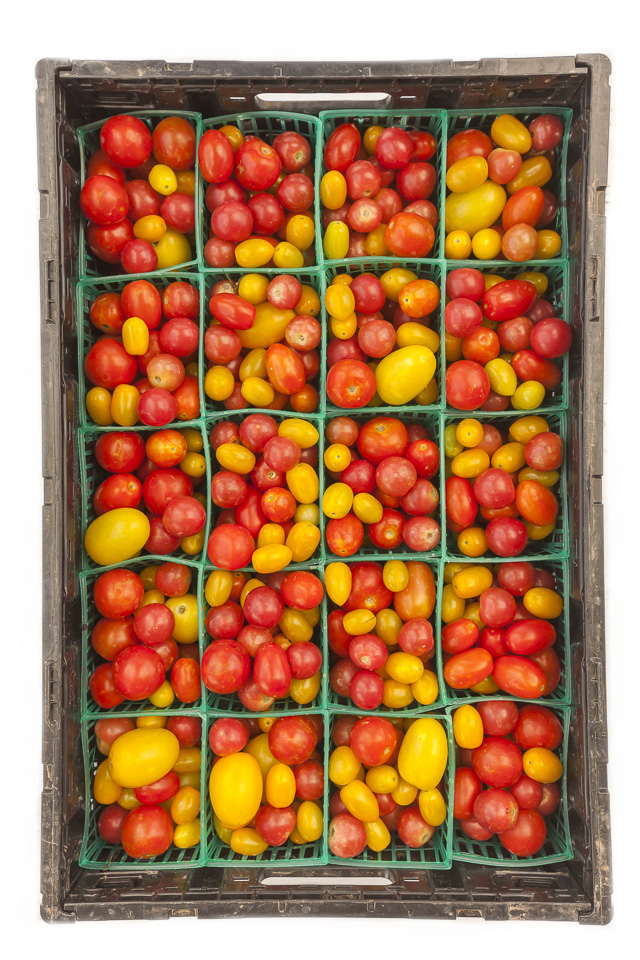
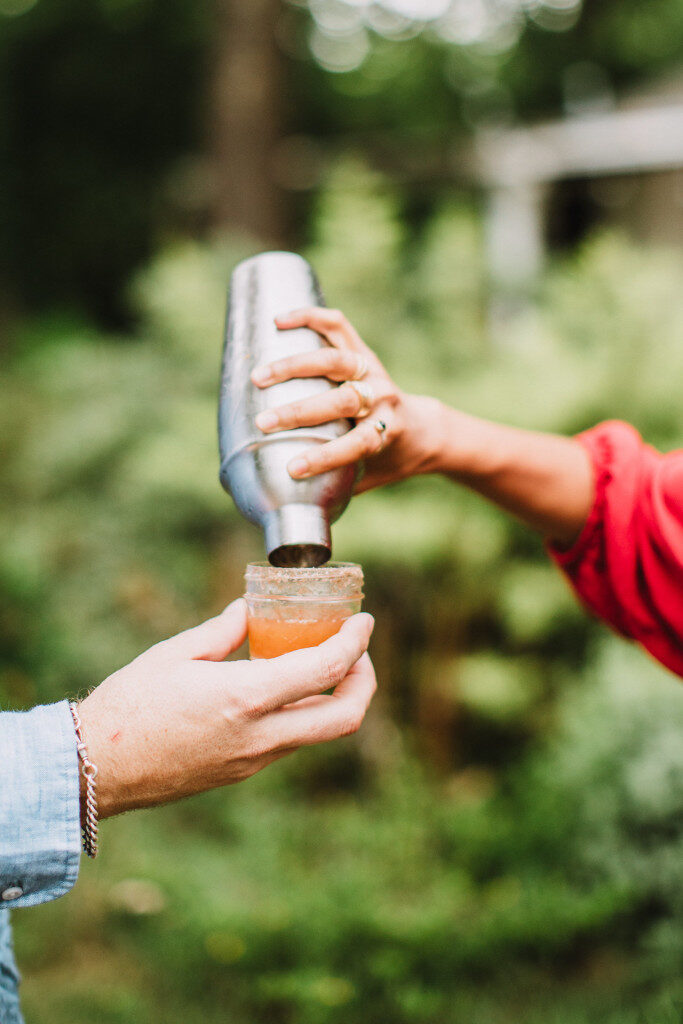
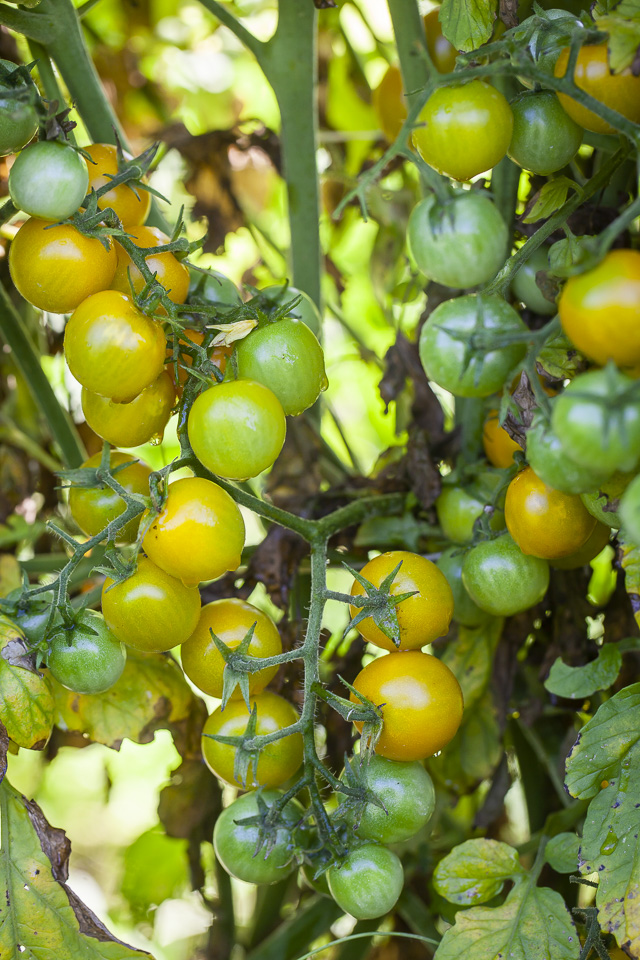
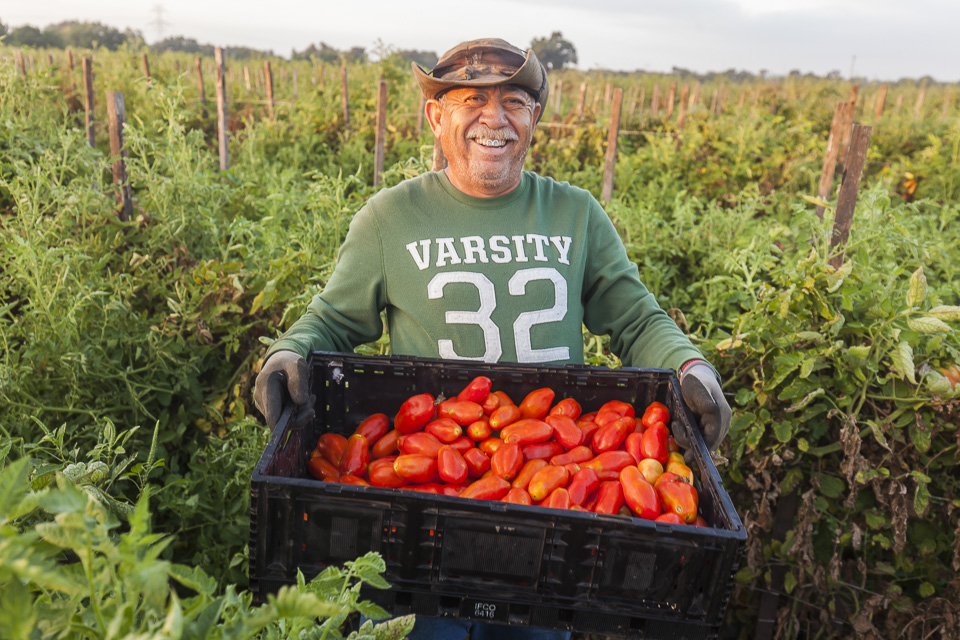

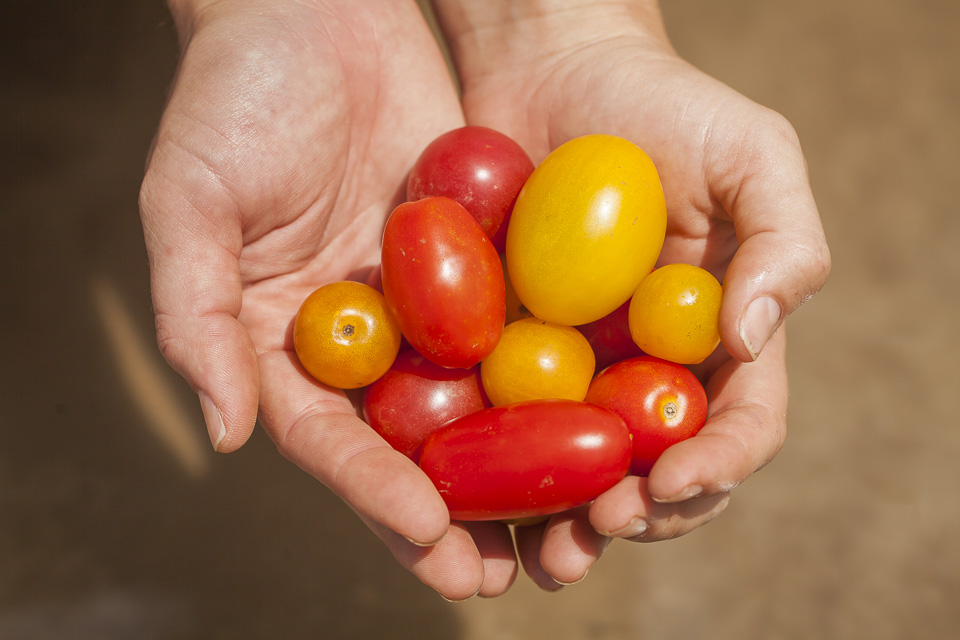
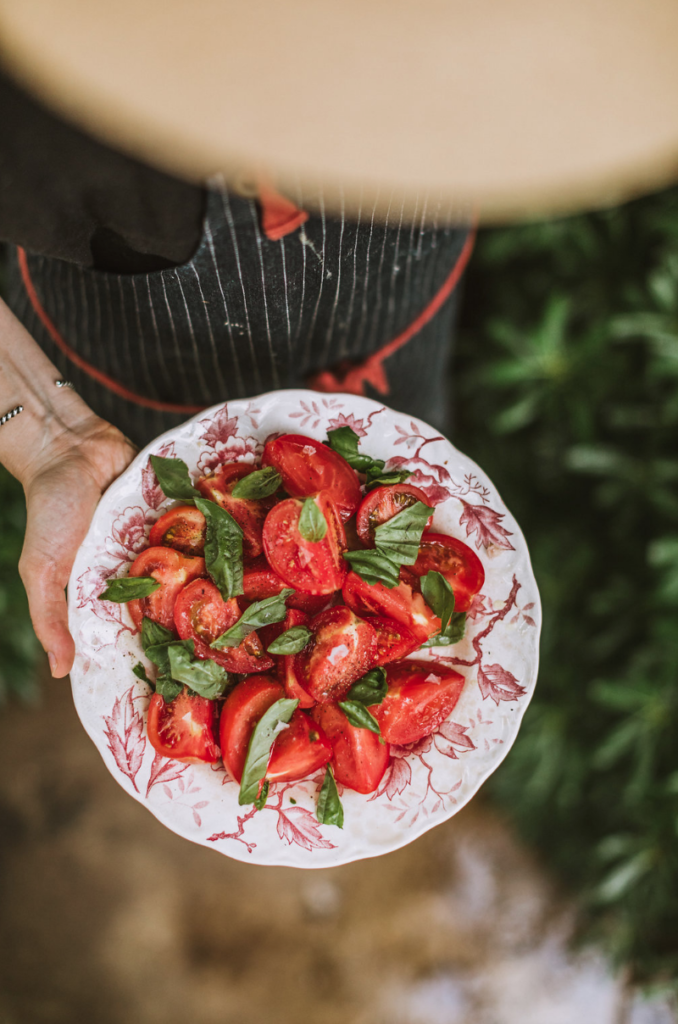
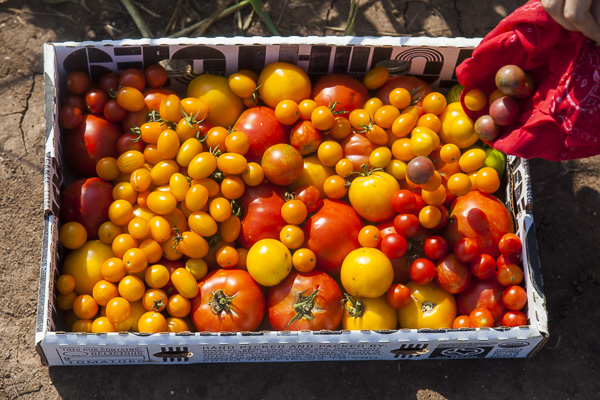
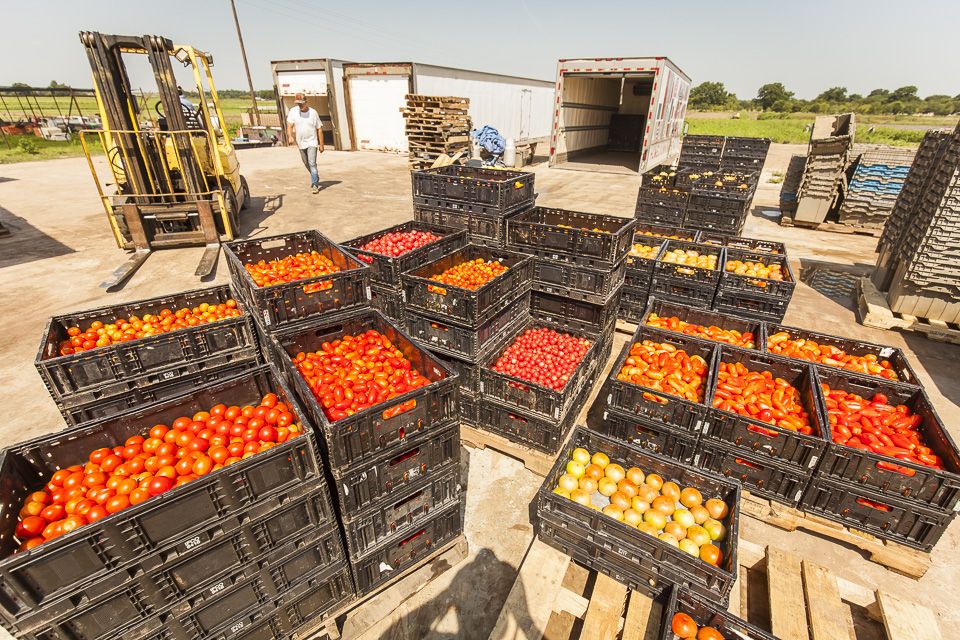

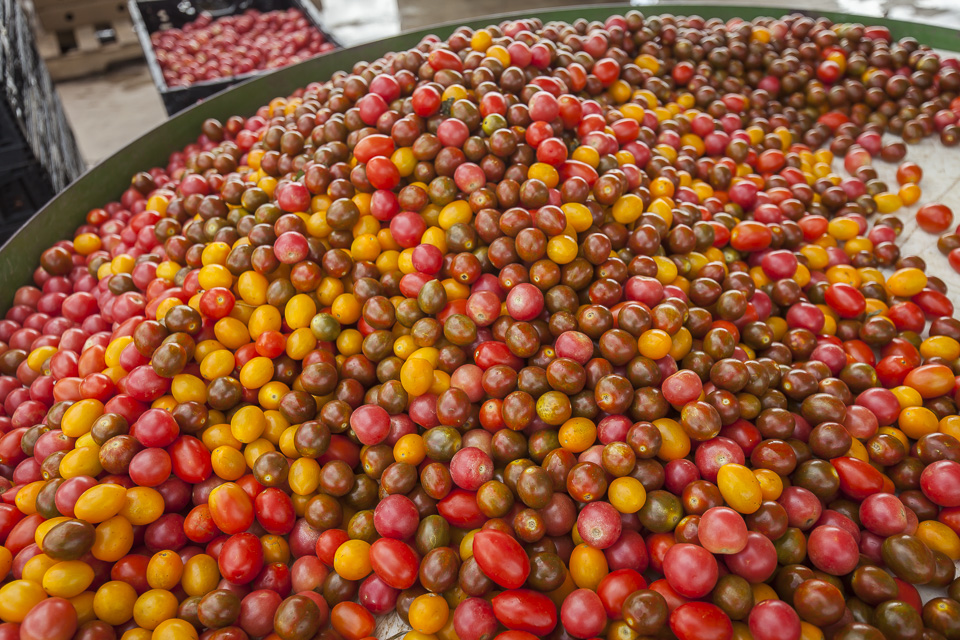
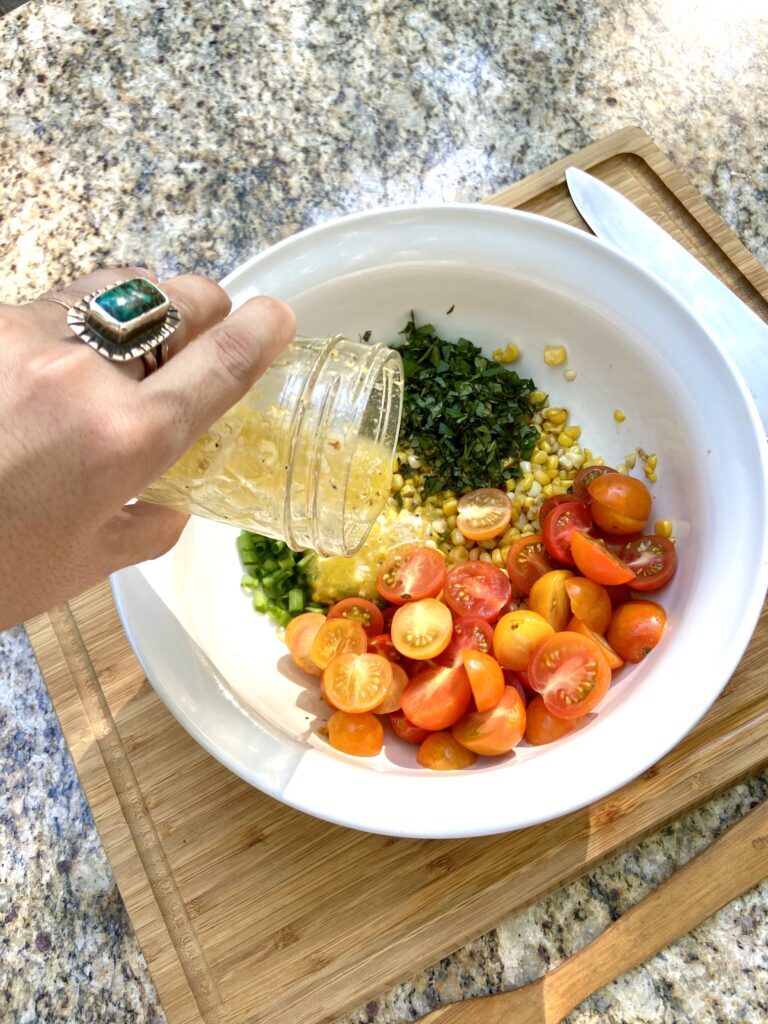
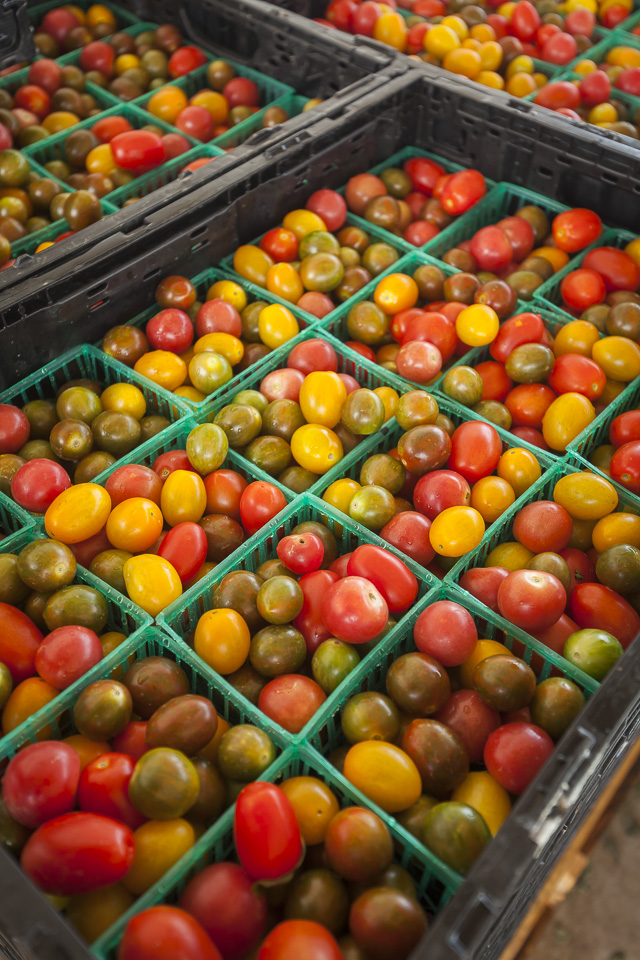
TOMATO GINGER JAM
06/17/20 — Ada Broussard
 Tomato Ginger Jam
Makes 2 cups
Author: The Migoni Kitchen
Total Time: 1 hour 45 minutes
Tomato Ginger Jam
Makes 2 cups
Author: The Migoni Kitchen
Total Time: 1 hour 45 minutes
Living in America, we are privileged enough to have grocery stores that stock all different types of tomatoes, even in the dead of winter! But there is something special about biting into a crisp, homegrown tomato when they are fresh and in season. When JBG emailed about buying tomatoes in bulk, we made sure to stock up. The only problem with buying 40lbs of tomatoes is figuring out creative ways to use them before they go bad! We obviously made a big batch of our awesome roasted salsa, a couple of tomato tarts, lots of sauce, and decided to get creative with our tomato ginger jam!
Now I know what you’re thinking, ”tomato jam?!?” YES! Remember when you were in school and discovered that a tomato is a fruit? Well then, of course we had to make some jam! When Marcelo used to work at the French Room, in Dallas, they would make the most decadent crab cakes topped with a wonderful tomato jam. Ever since then, we’ve made this a staple condiment in our kitchen. The jam is extremely versatile and is great on it’s own with some crackers, or substitute it on a BLT to take it up a notch, throw it on a burger, a pizza, a grilled cheese...honestly the combinations are endless!
Ingredients:
- 3 Lbs Tomatoes, cored and diced
- 2 Cups Granulated Sugar
- 2 Tbsp Ginger, grated
- 2 Limes, juiced
- 2 Tsps Fruit Pectin
- ½ Tsps Salt
Combine all of the ingredients into a large pot and place over medium heat until the mixture begins to simmer. Allow to gradually simmer (it should be a very mild simmer - if its too hot it will burn!) without a lid for about 90 minutes. Be sure to stir the pot every 10 minutes to prevent the sugar from sticking/burning. Remove from heat once the jam has reached a rich crimson color and the tomatoes and sugar form a thick but very pliable mixture. Allow to cool before jarring.
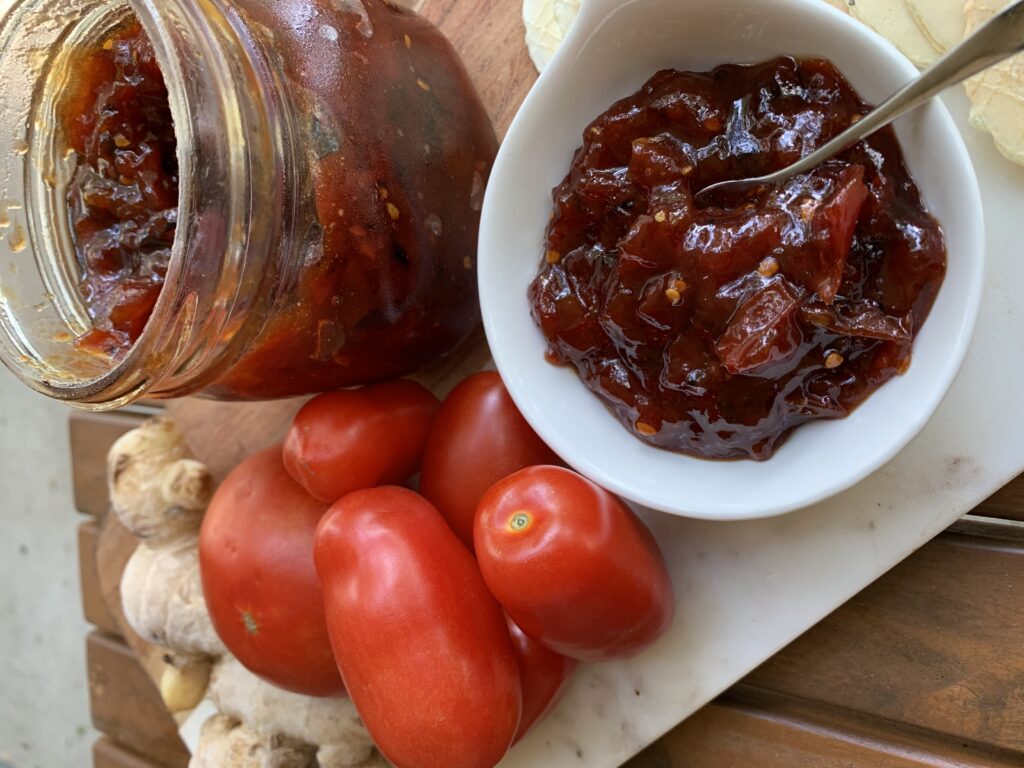
CSA BOX CONTENTS WEEK OF JUN 15TH
06/15/20 — Scott
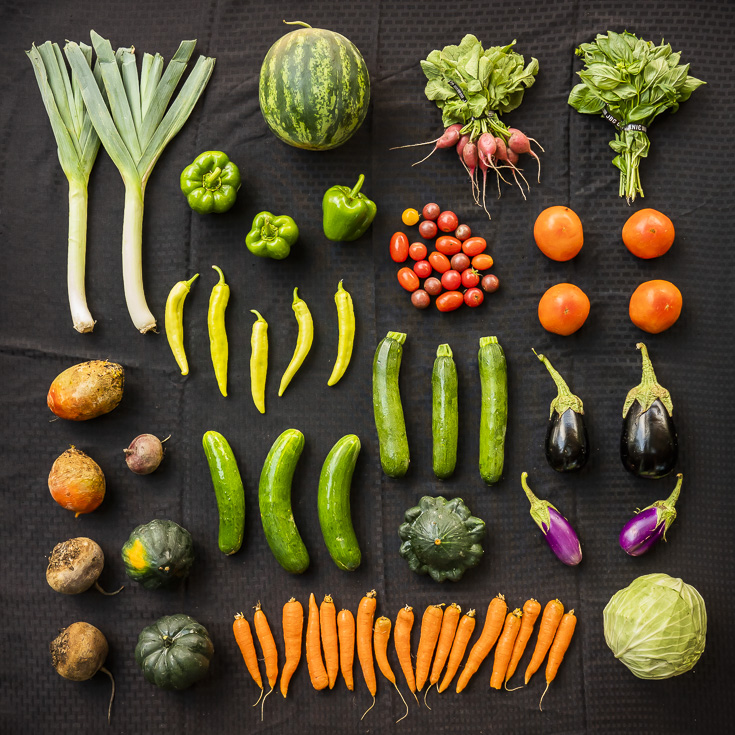 CSA Box Contents Week of Jun 15th
CSA Box Contents Week of Jun 15th
Large Box
Beets
Cabbage
Cucumber
Greens, Arugula
Herb, Basil
Herb, Spearmint
Leek
Melon, Farmers Choice
Okra
Pepper, Sweet
Potato
Squash, Butternut
Tomato
Beets
Cabbage
Cucumber
Greens, Arugula
Herb, Basil
Herb, Spearmint
Leek
Melon, Farmers Choice
Okra
Pepper, Sweet
Potato
Squash, Butternut
Tomato
Medium Box
Carrots
Farmers Choice
Herb, Basil
Melon, Farmers Choice
Pepper, Sweet
Radish
Squash, Butternut
Squash, Farmer's Choice
Tomato
Carrots
Farmers Choice
Herb, Basil
Melon, Farmers Choice
Pepper, Sweet
Radish
Squash, Butternut
Squash, Farmer's Choice
Tomato
Small Box
Beets
Cucumber
Herb, Farmers Choice
Herb, Fennel
Melon, Farmers Choice
Pepper, Sweet
Potato
Beets
Cucumber
Herb, Farmers Choice
Herb, Fennel
Melon, Farmers Choice
Pepper, Sweet
Potato
Individual Box
Beets
Carrots
Herb, Basil
Radish
Squash, Farmer's Choice
Tomato
Beets
Carrots
Herb, Basil
Radish
Squash, Farmer's Choice
Tomato
YOUR HOME GARDENS + AN URBAN FARM SPOTLIGHT
06/12/20 — Ada Broussard
We usually try to plan our blog schedule a few months in advance though we’re often adjusting the content in response to the environment around us, like a bumper crop of tomatoes, for example. Despite (or perhaps, because of!) the pandemic, our farm hosted one of our most successful online transplant sales, ever! Hundreds of you ordered transplants from our greenhouse and have grown inspiring gardens this spring. This week on the blog, we planned to show off your beautiful gardens at home. This week we are also extending the garden spotlight to highlight one of the only Black-owned urban farms operating in the Austin city limits - Tiffany Washington’s Dobbin-Kauv Garden Farm. This farmer spotlight will be the first of many. As we are learning more about the Black-owned farms and agricultural leaders in our country, we look forward to sharing these stories and resources with you.
Which brings us to an important statement: As a business, and as individual farmers, we support the Black Lives Matter movement. If you follow us on social media, you may have noticed that we have taken the past week+ to post less, listen, and learn. We acknowledge the systems of racism that are present in just about every corner of our society, including agriculture. We try our best to be good partners to local organizations dedicated to addressing food access and food injustice (which disproportionately affect People of Color in our community), but we also know that we can do so much more. We know that access to healthy, fresh food is a pillar of a just community, and as producers of such food, we are learning and thinking about how we can do more. Stay tuned.
Without further ado, take a look at some of the amazing backyard gardens around our community. We love seeing the final destination of our transplants - what started as seed in our greenhouses has turned into so much more in your homes. It’s often said that a farmer’s best fertilizer is her shadow, and this year’s community gardens certainly demonstrates some serious time in the dirt. Keep on farming!
![]() Suzette Schutz early spring bounty. Looks amazing!
Suzette Schutz early spring bounty. Looks amazing!
Tiffany Washington- Dobbin-Kauv Garden Farm There is no better woman to begin our Farmer Spotlight series than with Austin's own, Tiffany Washington. Tiffany runs one of the only Black-owned farms in Austin, growing on a plot of land in the middle of East Austin - the neighborhood she was born and raised in. After serving in the US Navy, Tiffany found solace in the dirt to help treat her PTSD. She was already a foodie and suddenly realized that farming was her future. The problem? She didn’t know where to exactly to start. Enter Farmshare Austin - JBG's next-door farm neighbors. It’s been a while since we’ve talked about Farmshare Austin, but we have a beloved spot in our hearts for this organization. In fact, Brenton was a part of the leadership who founded this organization in response to his vision as to how to grow and train future organic farmers. He had an idea, and together with his friend Carrie, as well as a wonderful board of directors, Farmshare Austin was born. But we digress! Tiffany found her way to Farmshare Austin about 4 years ago and completed their Farmer Starter program. She followed this program with another training opportunity offered specifically to veterans called from BattleGround to Breaking Ground.
![]()
For the past 3 years, Tiffany has transformed a vacant East Austin plot of land into a garden that helps feed those directly in her community. She sells her produce through a small 8 or so person CSA that is distributed through a local church, through an on-farm market stand, and also sometimes sells her products through Vinder. Like any good farmer, Tiffany donates a lot of the food she produces, as well, helping those in her neighborhood that show interest in the garden. When COVID-19 began, Tiffany harvested the entirety of her Spring crops, got some summer veggies in the ground, and then shifted her focus to the care of her four kiddos. From farmer, she turned teacher. Some of her summer crops include a few JBG tomato transplants, and she is gearing up for a more intensive fall season, hoping to expand her garden to the neighboring plot. Tiffany is currently running a Go-Fund me to help her finance some capital expenses for the farm including the construction of a better wash/pack area as well as simple things, like picnic tables, so her kiddos can have a place to do homework when she’s farming. If you’d like to learn more about Doubbin-Kauv Garden Farm and help Tiffany sustain the (only!) Black-owned farm opening in Austin city limits, checkout this page! And thanks, Tiffany, for letting us share your story. May you have a summer full of homegrown tomatoes and community support.
![]()
Suzette Schutze - Windy Hill Gardens
About 2 years ago I turned part of an old cow pen into a small garden space. Each year it gets a little bigger and it seems the transformation of the space is always a work in progress. The next project for the space is to add a sitting area because this is where I spend the early part of the mornings while the winds blow through. It’s so lovely for me and it’s turning into quite the little garden.
![]() Suzette's country garden.
Suzette's country garden.
I am obsessed with reading about JBG and what they have going on at the farm. They inspire me more than they know. Early this year before there was any talk about quarantine, I vowed I would use as many JBG transplants for the plants in my garden as I could. In mid February, I attended a session with Ada and friends for tips and guidelines on how to make your garden a success. After our session we were blessed with being able to shop the transplant sale. I left the transplant sale with about 30 or so plants! I’m pretty sure the girls at the register checking me out thought I was nuts.
![]() Suzette's transplant purchases are paying off in dividends! Check out this haul!
Suzette's transplant purchases are paying off in dividends! Check out this haul!
My biggest hiccup this year has been a varmint. I’m here to tell you that if you get a critter in your garden, you will lose the battle. Each season some sort of varmint shows to my little area to have a party. We have a gentleman that helps us with our ranch and he relayed to my husband, “we had a really bad storm out here and Suzette’s garden is a mess.” That mess wasn’t created by high winds and rain, but by an armadillo storm. That armadillo wreaked complete havoc on my hard work. Everything was upside down! I said to myself, “Defeat is not an option and I will not lose to it again!” So, off to the hardware store, I go to purchase a chicken wire type fence to protect my little area. Alas, it’s been about 3 weeks and we are “varmint free”. My biggest piece of advice to those of us with small areas, no matter where you live, is investing in some sort of fence/barrier to keep small critters out. You’ll be happy you did!
Thank you so much to JBG for the transplants and educational tools. My garden is coming along nicely and as I always say when I leave my garden area, “grow little garden grow!” Everyone stay safe and well!
Kathy Hamilton - 6 Foot Tomatoes, 8 Foot Poles
My Sungold tomatoes transplants are 6 feet tall! I just had to buy 8-foot poles to keep them from covering every other thing in my garden. All of the tomato plants I bought, except one, are producing right now. The tomatoes are still green but there are quite a few. The peppers have produced as well. They are small, like last year, but tasty. Everything I bought from JBG is flourishing.
Katy Catney - First time Gardener
I have a variety of cherry and Roma tomatoes. Some butter lettuce. Rainbow chard. Poblano, shishito, jalapeno, and lunch box peppers from the transplant sale. I also started some herbs from seeds and have 2 baskets of strawberries that are slow producing. I typically check on them first thing in the AM. Pick some items for lunch if available, but really care for them once the sun goes down. I’ve really enjoyed getting into the garden - I think it’s helped me keep a routine and sanity in this crazy time. Do you have a favorite plant in the garden? The Swiss chard is one of the most rewarding, but not a favorite. I like the shishito peppers and have really enjoyed seeing how the tomatoes and tomatillos have really taken over and started to fruit!! Tell me about your space! And what parts about it you love. Raised bed for most. 2 baskets for the strawberries to keep away from the squirrels and the herbs are still indoor sprouting. I think this has really sparked something bigger in our home as we started collecting rainwater for the plants and started to spend more time in the yard landscaping. We’ve also had fun with sourdough starter AND attempted to propagate from our CSA crops and other plants around our home.
Ashley Jones - Garden Turned Homeschool Science Lab
Our garden is going great and our transplants have been very successful. We’re excited about our white cherry tomatoes, which look like they’ll start ripening in the next week or two (at least the first little bunch). We were planning and working on our veggie garden pre-covid but I have to admit, now it’s an even more important activity in our house. Gardening is a big part of our five-year-old daughter’s science lessons. It’s great for her to see how the garden progresses each week. She’s very interested in seeing the actual fruits/ veggies pop up, though significantly less interested in helping with weeding. She likes watering, especially when she can turn the hose on herself and get all wet afterward. We’ve lost a few plants to pests, but not too many. We’re excited about tomatoes, squash, and eggplants in the near future. Of course, our CSA veggies look a lot better than those in our garden, but I’m optimistic for a fruitful summer!
Katie Kuzmikas - The Tough-Luck Garden.
I actually haven't had very good luck. I have big, beautifully green tomato and pepper plants with no flowers or fruit. I have one tiny pepper. I'm a new gardener (in Texas, I had a fair amount of experience in Illinois) and am growing in large containers in my yard. My leeks, sage, and thyme all died. My basil is about the only thing doing well. I used a potting soil mix, supplemented with some compost I purchased from JBG. I'm not sure what really went so wrong. It's nice to look at the healthy tomato plants, but I'm very sad I didn't get any tomatoes.
Update: I did get a second pepper on the same plant that produced the first one, but nothing else. Plants are still green and healthy-looking, so I'm still taking care of them. Hopefully, I will have a better time next year. I'm planning to try different potting soil.
Susan Nenno - Pepper Success, Questionable Tomatoes The plants I bought from you guys are amazing and there's no question that I'll be buying transplants again next year. My favorites right now are the serrano and jalapeno plants. I had no idea serranos on their own we sooo delicious. As the peppers come in, I'm quick-pickling them together (along with plenty of garlic cloves) and enjoying them on everything. My tomatoes are having a problem with yellowing leaves and I'm not sure why or what do do about that.( pictures attached) I've never been more grateful to be able to just pop into the garden from some herbs or onions as needed, eliminating extra time or trips in the store. The same goes for my CSA box! (JBG Tidbit: Yellowing leaves can be due to a number of problems - over watering, under watering, nitrogen deficiencies, or even disease. Our best advice: Spend some time in the garden and try to rule out any watering issues. If you think the cause may be due to disease, try to top dress with compost or apply an organic fertilizer.)
![]() Susan's pickles.
Susan's pickles.
![]() Susan's troublesome tomatoes.
Susan's troublesome tomatoes.
Kate Murray - A Close Study of a Backyard Garden with Several A-Ha Moments
I planted my first garden during spring break when I was in 7th grade. I still remember the first salad with homegrown lettuce. And then my older brother was punished with mowing the lawn and took it all down in one go. Whomp whomp. So, this is not my first garden, but my first in our new house with a proper backyard and sun, so it's my biggest and honestly most successful yet! I've already been eating peppers, green beans, chard, and herbs... and I'm about to have boku tomatoes on plants that are taller than I am, with wildly successful marigold companions. Which has been very rewarding, especially in this time. That being said, always learning.
New-to-me plants that I've had questions about are ping tung eggplant and hime kansen watermelon. The eggplant growth seems very slow and/or stunted. I gave it some compost tea, which seemed to help, and one bloom formed, which has turned into what I presume is the beginning of the first eggplant. But it's still only about 10 inches tall altogether. Wondering what the tips are for this plant, and greatest production? As for the watermelon, I've read that it's best for one vine per melon, with really specific instructions like "the seventh bloom between certain numbers of leaves"... which just seems cumbersome. I commend farmers for having that kind of brain space, but I just don't have it. The plant is extending itself well and has blooms, but I'm wondering in plain terms what I should look out for, and how best to support a melon once I see? (JBG Tidbit: If you're worried about pests or rot getting to your one, prize melon, re recommend simply placing a rock or plate piece of plastic or even plywood between the melon and the ground. Creating a barrier with the wet soil will help deter any potential problems.)
![]() Kate's garden, trimmed out with cinder blocks that are artfully adorned with flowers.
Kate's garden, trimmed out with cinder blocks that are artfully adorned with flowers.
An a-ha moment I've had was with a natural pest deterrent. Our property has three pecan trees and one fig tree, so it's a haven for squirrels. I call them friends because that's how my dog Ripley is trained to know who I am talking about, and she loves to go after them. So the friends kept eating my chard, and I did a google search for natural options to prevent. I sprinkled garlic powder and red pepper flakes all around and on them, and it worked like a charm! They haven't touched them since.
Otherwise, I've been lucky pest-wise, except for something occasionally afflicting damage on my basil. It leaves little brown spots and holes. I think I found the culprit and keep an eye out to pick the bug off, but then it comes back in waves even when I don't see a bug. Wondering what it is, and how to prevent it? (JBG Tidbit: It's hard to ID the bug without a photo, but our best advice is simply to do routine checks of your leaves, even when they look undamaged. Pickoff the culprits and kill the culprits, possibly by dropping into a bit of soapy water.)
I think my next adventure is learning to capture seed from my plants. One of my cilantro plants bolted up really early, so I'm curious about that process.
A favorite recipe of mine is something I still make to this day that I mimic from a night at your house!! Fennel and citrus salad, but with mizuna and pea shoots added. Nothing like it.
Ada Broussard - Oh Hail, No.
This spring marked my first garden at my new home, out near Fredericksburg. With JBG transplants + so much time on my hands, I planted and tended to my best garden, ever! But then, one afternoon, the sky suddenly turned from blue to black and golf-ball-sized hailed rained from the sky for 30 minutes, and then about an hour later, for another 15 minutes. In the moment, I was so mesmerized by falling balls of ice that I forgot to be worried about the garden. Needless to say, this photo below was taken a day or so before the hail storm. Everything was damaged, badly, though some of it is now showing some signs of life. I fear my tomatoes might never recover, but that's what the JBG tomato sale is for. There’s a lesson in here, somewhere.
![]() Ada's garden pre-hail.
Ada's garden pre-hail.
Lauren Jenson - Gross Worms but Bountiful Peppers in South Austin
Our squash (patty pan, zucchini) have gross worms that are accessing the squash through the stem, ack! Our sugar baby watermelons are doing AMAZING. Green basil and green okra doing great, red okra and red basil not so much. About 9 pepper varieties which are all doing great as expected. Two cherry tomato varieties which are hanging in there so far.
![]() Lauren's amazing watermelon, almost ready for a picnic.
Lauren's amazing watermelon, almost ready for a picnic.
Considering the circumstances, I've been gardening A LOT. Working from home now I take garden breaks. Something that really stuck with me was when someone asked how to prevent pests and your response was just to be in your garden as much as possible. So I've really taken that to heart, just trying to turn over every leaf when I have the chance. You never know what freak bug you'll find!
While I'm not new to the South, I am new to Texas. Growing up in Louisiana all the considerations and issues are different. Too much water, too much mud. The seasonality of vegetables here is something I've loved learning about, and JBG plants have such an established history and they do so well!
![]()
Nora Chovanec - Hodgepodge Trellis and a Black Fly Invasion
![]()
![]()
Which brings us to an important statement: As a business, and as individual farmers, we support the Black Lives Matter movement. If you follow us on social media, you may have noticed that we have taken the past week+ to post less, listen, and learn. We acknowledge the systems of racism that are present in just about every corner of our society, including agriculture. We try our best to be good partners to local organizations dedicated to addressing food access and food injustice (which disproportionately affect People of Color in our community), but we also know that we can do so much more. We know that access to healthy, fresh food is a pillar of a just community, and as producers of such food, we are learning and thinking about how we can do more. Stay tuned.
Without further ado, take a look at some of the amazing backyard gardens around our community. We love seeing the final destination of our transplants - what started as seed in our greenhouses has turned into so much more in your homes. It’s often said that a farmer’s best fertilizer is her shadow, and this year’s community gardens certainly demonstrates some serious time in the dirt. Keep on farming!
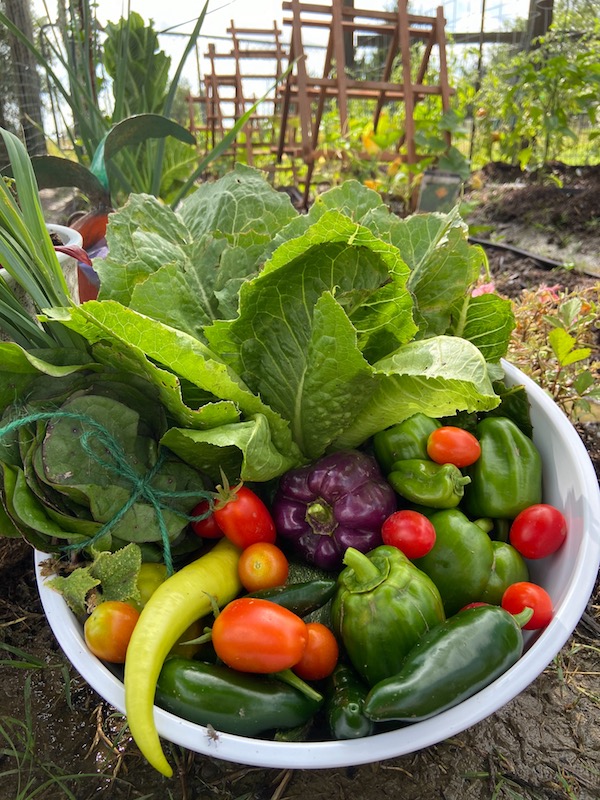 Suzette Schutz early spring bounty. Looks amazing!
Suzette Schutz early spring bounty. Looks amazing!
Tiffany Washington- Dobbin-Kauv Garden Farm There is no better woman to begin our Farmer Spotlight series than with Austin's own, Tiffany Washington. Tiffany runs one of the only Black-owned farms in Austin, growing on a plot of land in the middle of East Austin - the neighborhood she was born and raised in. After serving in the US Navy, Tiffany found solace in the dirt to help treat her PTSD. She was already a foodie and suddenly realized that farming was her future. The problem? She didn’t know where to exactly to start. Enter Farmshare Austin - JBG's next-door farm neighbors. It’s been a while since we’ve talked about Farmshare Austin, but we have a beloved spot in our hearts for this organization. In fact, Brenton was a part of the leadership who founded this organization in response to his vision as to how to grow and train future organic farmers. He had an idea, and together with his friend Carrie, as well as a wonderful board of directors, Farmshare Austin was born. But we digress! Tiffany found her way to Farmshare Austin about 4 years ago and completed their Farmer Starter program. She followed this program with another training opportunity offered specifically to veterans called from BattleGround to Breaking Ground.

For the past 3 years, Tiffany has transformed a vacant East Austin plot of land into a garden that helps feed those directly in her community. She sells her produce through a small 8 or so person CSA that is distributed through a local church, through an on-farm market stand, and also sometimes sells her products through Vinder. Like any good farmer, Tiffany donates a lot of the food she produces, as well, helping those in her neighborhood that show interest in the garden. When COVID-19 began, Tiffany harvested the entirety of her Spring crops, got some summer veggies in the ground, and then shifted her focus to the care of her four kiddos. From farmer, she turned teacher. Some of her summer crops include a few JBG tomato transplants, and she is gearing up for a more intensive fall season, hoping to expand her garden to the neighboring plot. Tiffany is currently running a Go-Fund me to help her finance some capital expenses for the farm including the construction of a better wash/pack area as well as simple things, like picnic tables, so her kiddos can have a place to do homework when she’s farming. If you’d like to learn more about Doubbin-Kauv Garden Farm and help Tiffany sustain the (only!) Black-owned farm opening in Austin city limits, checkout this page! And thanks, Tiffany, for letting us share your story. May you have a summer full of homegrown tomatoes and community support.

Suzette Schutze - Windy Hill Gardens
About 2 years ago I turned part of an old cow pen into a small garden space. Each year it gets a little bigger and it seems the transformation of the space is always a work in progress. The next project for the space is to add a sitting area because this is where I spend the early part of the mornings while the winds blow through. It’s so lovely for me and it’s turning into quite the little garden.
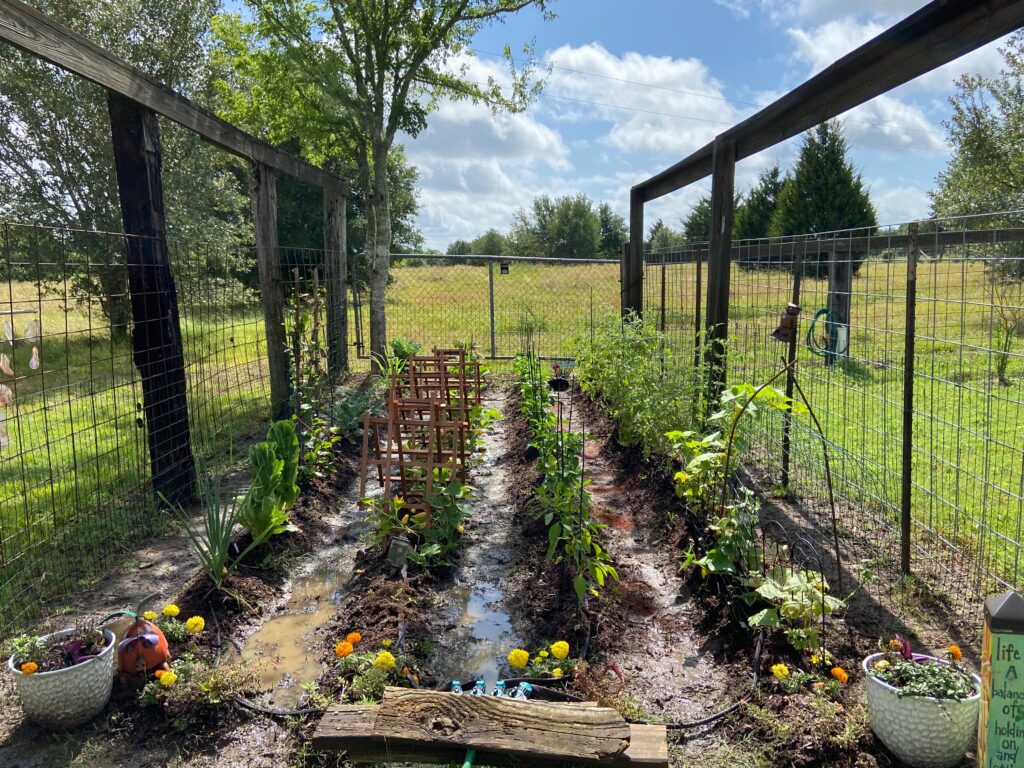 Suzette's country garden.
Suzette's country garden.
I am obsessed with reading about JBG and what they have going on at the farm. They inspire me more than they know. Early this year before there was any talk about quarantine, I vowed I would use as many JBG transplants for the plants in my garden as I could. In mid February, I attended a session with Ada and friends for tips and guidelines on how to make your garden a success. After our session we were blessed with being able to shop the transplant sale. I left the transplant sale with about 30 or so plants! I’m pretty sure the girls at the register checking me out thought I was nuts.
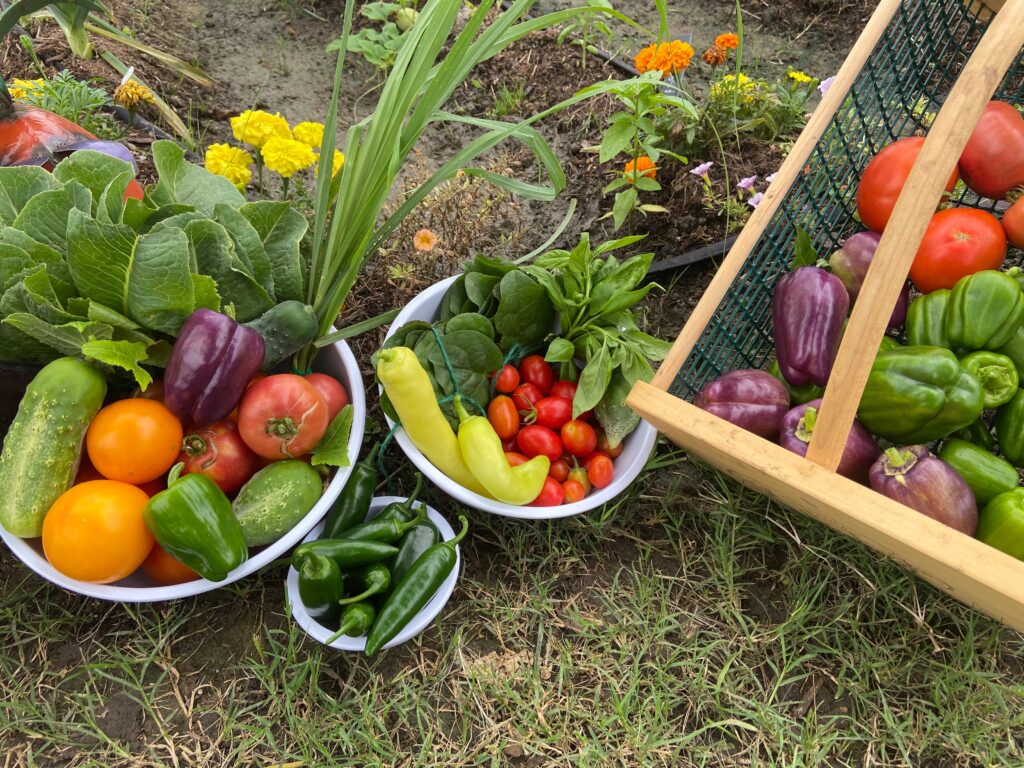 Suzette's transplant purchases are paying off in dividends! Check out this haul!
Suzette's transplant purchases are paying off in dividends! Check out this haul!
My biggest hiccup this year has been a varmint. I’m here to tell you that if you get a critter in your garden, you will lose the battle. Each season some sort of varmint shows to my little area to have a party. We have a gentleman that helps us with our ranch and he relayed to my husband, “we had a really bad storm out here and Suzette’s garden is a mess.” That mess wasn’t created by high winds and rain, but by an armadillo storm. That armadillo wreaked complete havoc on my hard work. Everything was upside down! I said to myself, “Defeat is not an option and I will not lose to it again!” So, off to the hardware store, I go to purchase a chicken wire type fence to protect my little area. Alas, it’s been about 3 weeks and we are “varmint free”. My biggest piece of advice to those of us with small areas, no matter where you live, is investing in some sort of fence/barrier to keep small critters out. You’ll be happy you did!
Thank you so much to JBG for the transplants and educational tools. My garden is coming along nicely and as I always say when I leave my garden area, “grow little garden grow!” Everyone stay safe and well!
Kathy Hamilton - 6 Foot Tomatoes, 8 Foot Poles
My Sungold tomatoes transplants are 6 feet tall! I just had to buy 8-foot poles to keep them from covering every other thing in my garden. All of the tomato plants I bought, except one, are producing right now. The tomatoes are still green but there are quite a few. The peppers have produced as well. They are small, like last year, but tasty. Everything I bought from JBG is flourishing.
Katy Catney - First time Gardener
I have a variety of cherry and Roma tomatoes. Some butter lettuce. Rainbow chard. Poblano, shishito, jalapeno, and lunch box peppers from the transplant sale. I also started some herbs from seeds and have 2 baskets of strawberries that are slow producing. I typically check on them first thing in the AM. Pick some items for lunch if available, but really care for them once the sun goes down. I’ve really enjoyed getting into the garden - I think it’s helped me keep a routine and sanity in this crazy time. Do you have a favorite plant in the garden? The Swiss chard is one of the most rewarding, but not a favorite. I like the shishito peppers and have really enjoyed seeing how the tomatoes and tomatillos have really taken over and started to fruit!! Tell me about your space! And what parts about it you love. Raised bed for most. 2 baskets for the strawberries to keep away from the squirrels and the herbs are still indoor sprouting. I think this has really sparked something bigger in our home as we started collecting rainwater for the plants and started to spend more time in the yard landscaping. We’ve also had fun with sourdough starter AND attempted to propagate from our CSA crops and other plants around our home.
Ashley Jones - Garden Turned Homeschool Science Lab
Our garden is going great and our transplants have been very successful. We’re excited about our white cherry tomatoes, which look like they’ll start ripening in the next week or two (at least the first little bunch). We were planning and working on our veggie garden pre-covid but I have to admit, now it’s an even more important activity in our house. Gardening is a big part of our five-year-old daughter’s science lessons. It’s great for her to see how the garden progresses each week. She’s very interested in seeing the actual fruits/ veggies pop up, though significantly less interested in helping with weeding. She likes watering, especially when she can turn the hose on herself and get all wet afterward. We’ve lost a few plants to pests, but not too many. We’re excited about tomatoes, squash, and eggplants in the near future. Of course, our CSA veggies look a lot better than those in our garden, but I’m optimistic for a fruitful summer!
Katie Kuzmikas - The Tough-Luck Garden.
I actually haven't had very good luck. I have big, beautifully green tomato and pepper plants with no flowers or fruit. I have one tiny pepper. I'm a new gardener (in Texas, I had a fair amount of experience in Illinois) and am growing in large containers in my yard. My leeks, sage, and thyme all died. My basil is about the only thing doing well. I used a potting soil mix, supplemented with some compost I purchased from JBG. I'm not sure what really went so wrong. It's nice to look at the healthy tomato plants, but I'm very sad I didn't get any tomatoes.
Update: I did get a second pepper on the same plant that produced the first one, but nothing else. Plants are still green and healthy-looking, so I'm still taking care of them. Hopefully, I will have a better time next year. I'm planning to try different potting soil.
Susan Nenno - Pepper Success, Questionable Tomatoes The plants I bought from you guys are amazing and there's no question that I'll be buying transplants again next year. My favorites right now are the serrano and jalapeno plants. I had no idea serranos on their own we sooo delicious. As the peppers come in, I'm quick-pickling them together (along with plenty of garlic cloves) and enjoying them on everything. My tomatoes are having a problem with yellowing leaves and I'm not sure why or what do do about that.( pictures attached) I've never been more grateful to be able to just pop into the garden from some herbs or onions as needed, eliminating extra time or trips in the store. The same goes for my CSA box! (JBG Tidbit: Yellowing leaves can be due to a number of problems - over watering, under watering, nitrogen deficiencies, or even disease. Our best advice: Spend some time in the garden and try to rule out any watering issues. If you think the cause may be due to disease, try to top dress with compost or apply an organic fertilizer.)
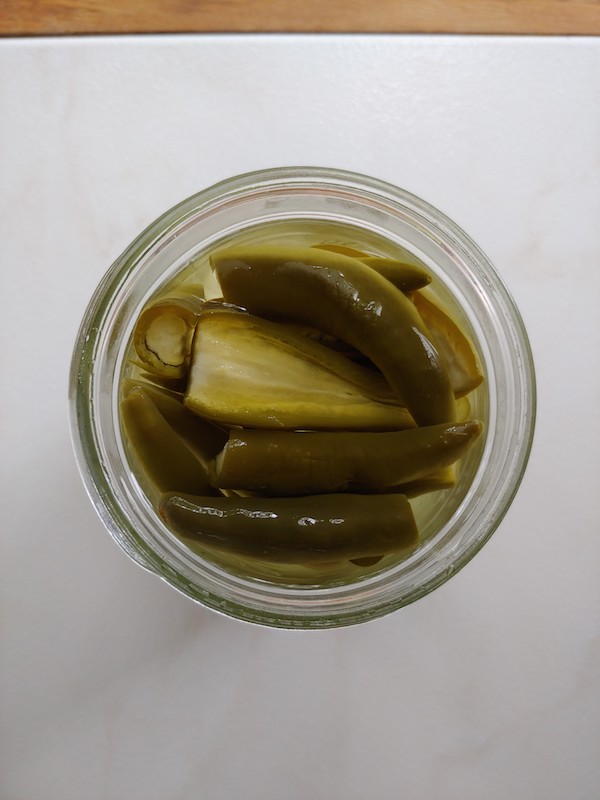 Susan's pickles.
Susan's pickles.
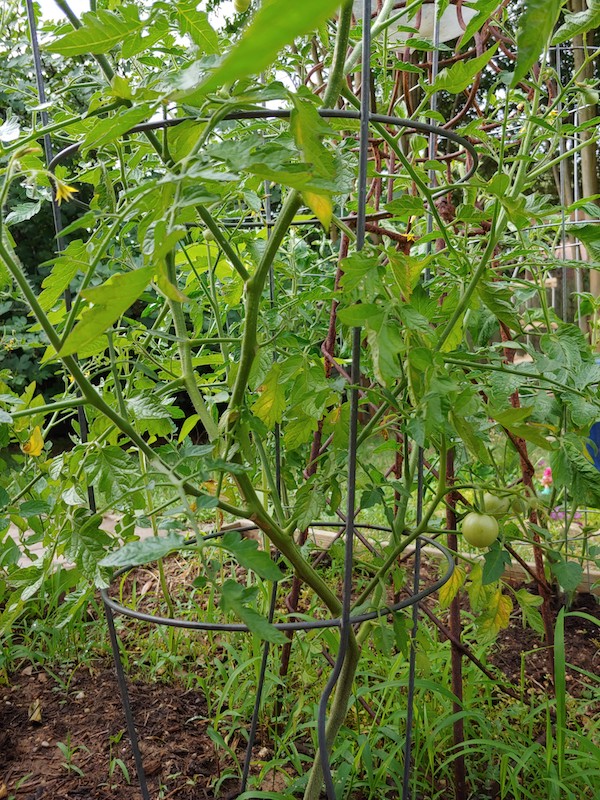 Susan's troublesome tomatoes.
Susan's troublesome tomatoes.
Kate Murray - A Close Study of a Backyard Garden with Several A-Ha Moments
I planted my first garden during spring break when I was in 7th grade. I still remember the first salad with homegrown lettuce. And then my older brother was punished with mowing the lawn and took it all down in one go. Whomp whomp. So, this is not my first garden, but my first in our new house with a proper backyard and sun, so it's my biggest and honestly most successful yet! I've already been eating peppers, green beans, chard, and herbs... and I'm about to have boku tomatoes on plants that are taller than I am, with wildly successful marigold companions. Which has been very rewarding, especially in this time. That being said, always learning.
New-to-me plants that I've had questions about are ping tung eggplant and hime kansen watermelon. The eggplant growth seems very slow and/or stunted. I gave it some compost tea, which seemed to help, and one bloom formed, which has turned into what I presume is the beginning of the first eggplant. But it's still only about 10 inches tall altogether. Wondering what the tips are for this plant, and greatest production? As for the watermelon, I've read that it's best for one vine per melon, with really specific instructions like "the seventh bloom between certain numbers of leaves"... which just seems cumbersome. I commend farmers for having that kind of brain space, but I just don't have it. The plant is extending itself well and has blooms, but I'm wondering in plain terms what I should look out for, and how best to support a melon once I see? (JBG Tidbit: If you're worried about pests or rot getting to your one, prize melon, re recommend simply placing a rock or plate piece of plastic or even plywood between the melon and the ground. Creating a barrier with the wet soil will help deter any potential problems.)
 Kate's garden, trimmed out with cinder blocks that are artfully adorned with flowers.
Kate's garden, trimmed out with cinder blocks that are artfully adorned with flowers.
An a-ha moment I've had was with a natural pest deterrent. Our property has three pecan trees and one fig tree, so it's a haven for squirrels. I call them friends because that's how my dog Ripley is trained to know who I am talking about, and she loves to go after them. So the friends kept eating my chard, and I did a google search for natural options to prevent. I sprinkled garlic powder and red pepper flakes all around and on them, and it worked like a charm! They haven't touched them since.
Otherwise, I've been lucky pest-wise, except for something occasionally afflicting damage on my basil. It leaves little brown spots and holes. I think I found the culprit and keep an eye out to pick the bug off, but then it comes back in waves even when I don't see a bug. Wondering what it is, and how to prevent it? (JBG Tidbit: It's hard to ID the bug without a photo, but our best advice is simply to do routine checks of your leaves, even when they look undamaged. Pickoff the culprits and kill the culprits, possibly by dropping into a bit of soapy water.)
I think my next adventure is learning to capture seed from my plants. One of my cilantro plants bolted up really early, so I'm curious about that process.
A favorite recipe of mine is something I still make to this day that I mimic from a night at your house!! Fennel and citrus salad, but with mizuna and pea shoots added. Nothing like it.
Ada Broussard - Oh Hail, No.
This spring marked my first garden at my new home, out near Fredericksburg. With JBG transplants + so much time on my hands, I planted and tended to my best garden, ever! But then, one afternoon, the sky suddenly turned from blue to black and golf-ball-sized hailed rained from the sky for 30 minutes, and then about an hour later, for another 15 minutes. In the moment, I was so mesmerized by falling balls of ice that I forgot to be worried about the garden. Needless to say, this photo below was taken a day or so before the hail storm. Everything was damaged, badly, though some of it is now showing some signs of life. I fear my tomatoes might never recover, but that's what the JBG tomato sale is for. There’s a lesson in here, somewhere.
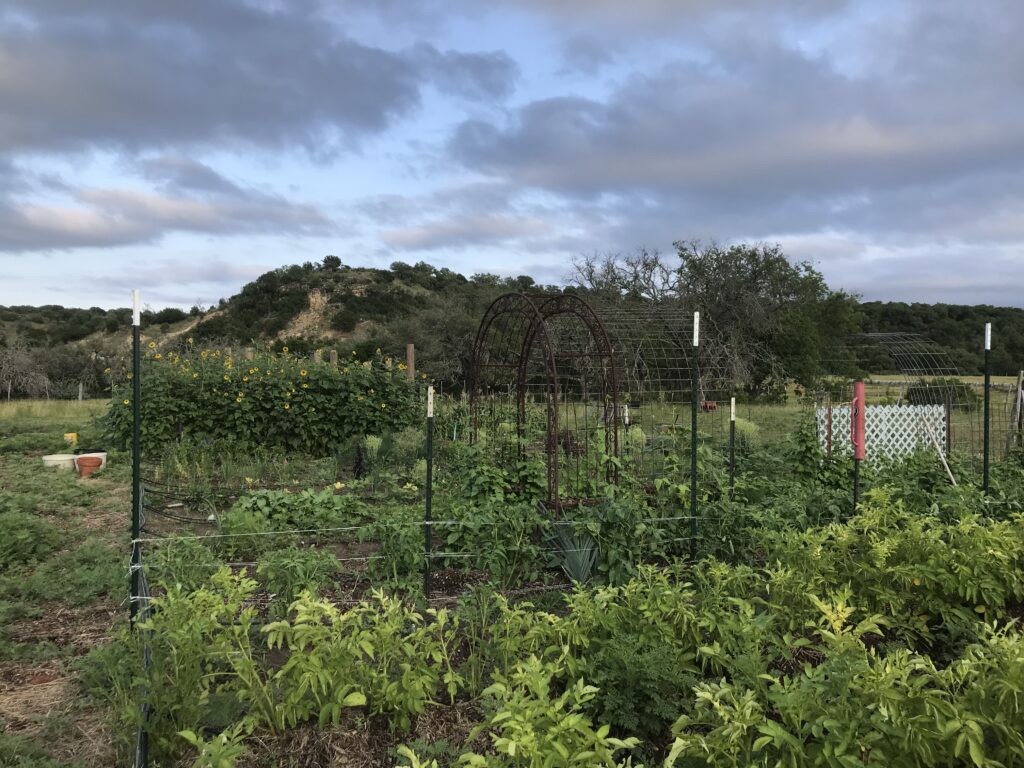 Ada's garden pre-hail.
Ada's garden pre-hail.
Lauren Jenson - Gross Worms but Bountiful Peppers in South Austin
Our squash (patty pan, zucchini) have gross worms that are accessing the squash through the stem, ack! Our sugar baby watermelons are doing AMAZING. Green basil and green okra doing great, red okra and red basil not so much. About 9 pepper varieties which are all doing great as expected. Two cherry tomato varieties which are hanging in there so far.
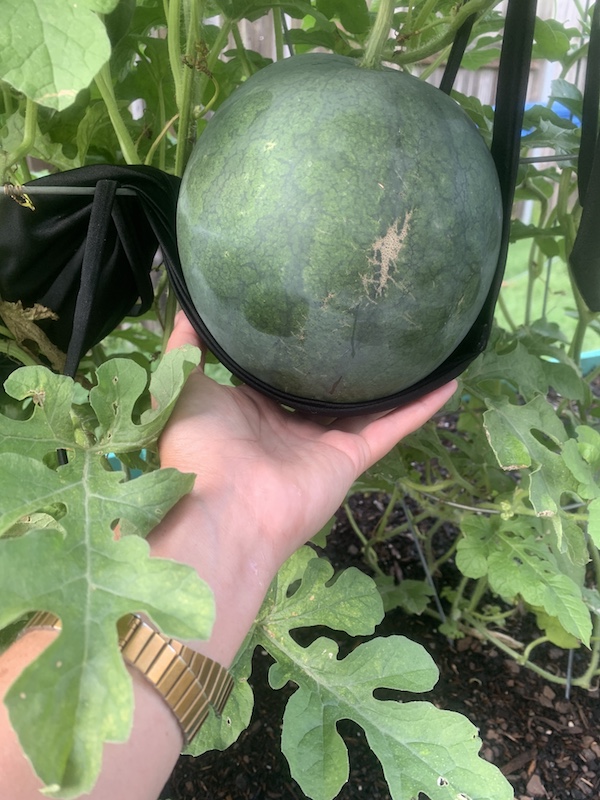 Lauren's amazing watermelon, almost ready for a picnic.
Lauren's amazing watermelon, almost ready for a picnic.
Considering the circumstances, I've been gardening A LOT. Working from home now I take garden breaks. Something that really stuck with me was when someone asked how to prevent pests and your response was just to be in your garden as much as possible. So I've really taken that to heart, just trying to turn over every leaf when I have the chance. You never know what freak bug you'll find!
While I'm not new to the South, I am new to Texas. Growing up in Louisiana all the considerations and issues are different. Too much water, too much mud. The seasonality of vegetables here is something I've loved learning about, and JBG plants have such an established history and they do so well!

Nora Chovanec - Hodgepodge Trellis and a Black Fly Invasion

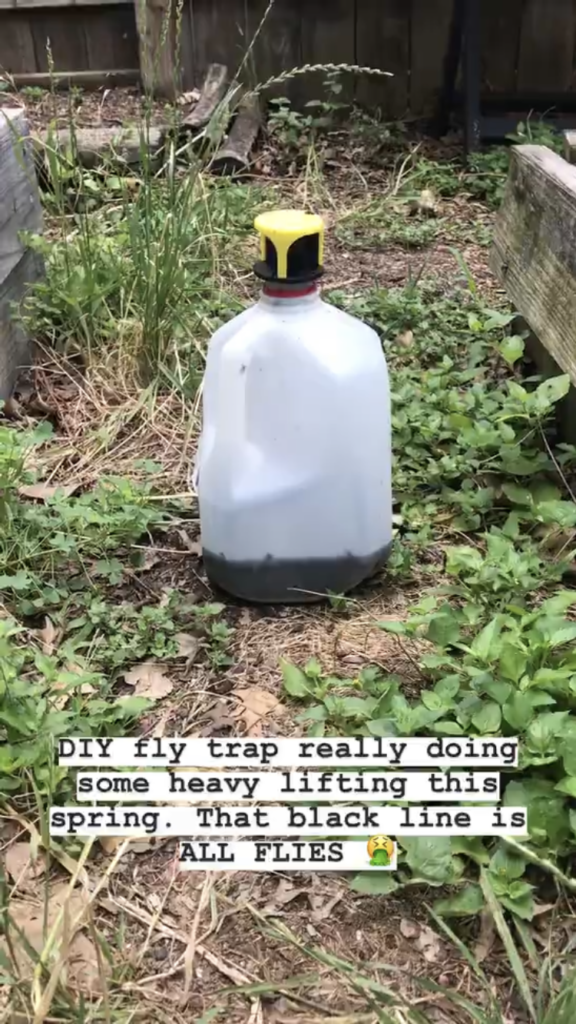






 0 ITEMS IN CART
0 ITEMS IN CART 

